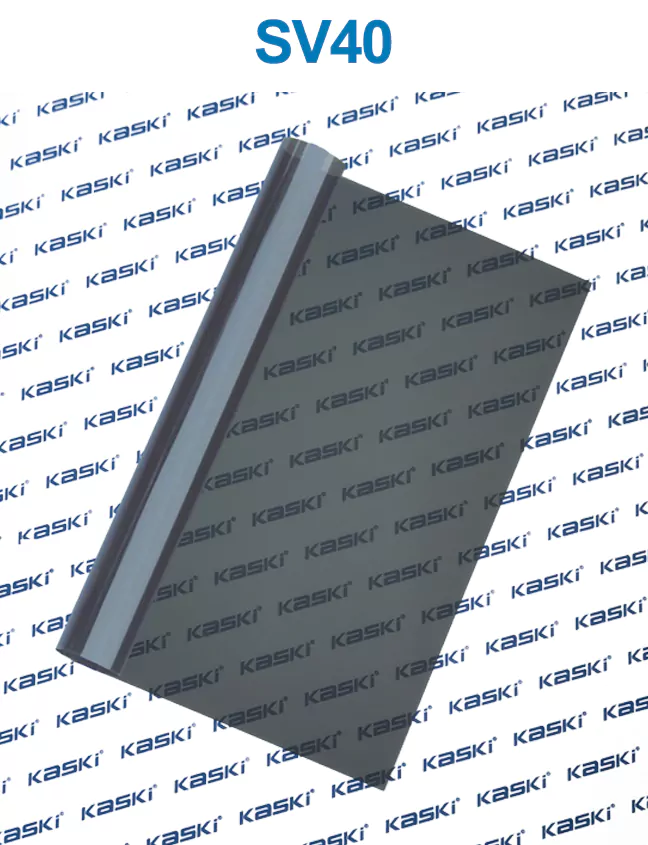Automotive window tinting has become a popular choice for car owners looking to enhance their vehicle's appearance, comfort, and energy efficiency. From blocking harmful UV rays to reducing glare and maintaining a comfortable cabin temperature, the advantages of window tinting are numerous. In this comprehensive guide, we'll explore the principles of automotive window tinting, provide a detailed installation case, and share testimonials from satisfied customers.
The Principles of automotive window tinting
Window tinting film is a thin, transparent or semi-transparent material that is applied to the interior of a vehicle's windows. These films are designed to block a significant portion of the sun's rays, including harmful UV radiation, while still allowing natural light to pass through.
The primary benefits of heat control window film include:
1. Rejecting the Sun's Heat: Tinted windows can block up to 99% of the sun's heat, keeping the interior of your vehicle cooler and more comfortable, especially during the hot summer months.
2. Protecting Decorative Curtains and Blinds: By reducing the amount of direct sunlight entering the vehicle, window tinting can help preserve the condition of your car's interior accessories, such as decorative curtains and blinds.
3. Increasing Comfort and Energy Efficiency: A cooler cabin temperature can lead to reduced reliance on air conditioning, resulting in improved fuel efficiency and a more comfortable driving experience.
4. Blocking Harmful UV Rays: Tinted windows can block up to 99% of harmful UV rays, protecting the skin of both the driver and passengers from sun damage.
5. Maintaining Natural Light: High-quality window tinting films are designed to block the sun's heat and UV rays without significantly reducing the amount of natural light entering the vehicle, ensuring a bright and comfortable interior.
A Detailed Installation Case: Tinting a Toyota Camry
To provide a real-world example, let's take a look at the window tinting process for a Toyota Camry.
The vehicle: 2019 Toyota Camry
The tinting film: High-quality ceramic tint with 35% visible light transmission (VLT)
Step 1: Preparation
Before the tinting process begins, the vehicle's windows are thoroughly cleaned to ensure a proper adhesion of the tinting film.
Step 2: Measuring and Cutting
The tinting film is carefully measured and cut to fit the exact dimensions of each window, ensuring a seamless and precise application.
Step 3: Application
The tinting film is then applied to the interior of the vehicle's windows, starting with the side windows and working towards the rear glass and windscreen. Special attention is paid to ensuring the film is properly aligned and free of air bubbles or wrinkles.
Step 4: Curing
After the tinting film is applied, the vehicle is left to "cure" for a specified period, typically 24-48 hours. During this time, the adhesive on the film fully bonds to the window, ensuring a long-lasting and durable tint.
Step 5: Final Inspection
Once the curing process is complete, the installer performs a final inspection to ensure the tinting film is properly installed and meets the customer's expectations.
Testimonials from Satisfied Customers
"I recently had my Toyota Camry's windows tinted, and I couldn't be happier with the results. The cabin is so much cooler, and the glare from the sun is significantly reduced. I no longer have to squint while driving, and my car's interior looks great. The installation process was quick and professional, and I highly recommend this service to anyone looking to enhance their vehicle's comfort and style."
- Sarah, Camry owner
"Tinting my car's windows was one of the best decisions I've made. Not only does it look great, but it's also made a noticeable difference in the temperature of my vehicle. I no longer have to crank up the air conditioning to stay comfortable, and I've noticed a slight improvement in my fuel efficiency as well. The team that installed the tinting was knowledgeable and efficient, and I'm thrilled with the final result."
- Michael, Camry owner
Conclusion
Automotive window tinting is a simple and effective way to enhance the comfort, efficiency, and style of your vehicle. By blocking harmful UV rays, reducing glare, and maintaining a comfortable cabin temperature, window tinting can provide a host of benefits for car owners. Whether you're looking to protect your vehicle's interior, save on energy costs, or simply improve your driving experience, investing in high-quality window tinting is a smart choice.

















